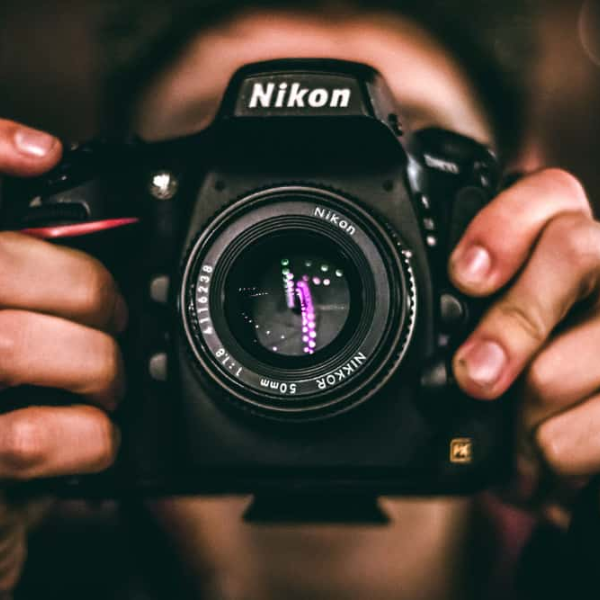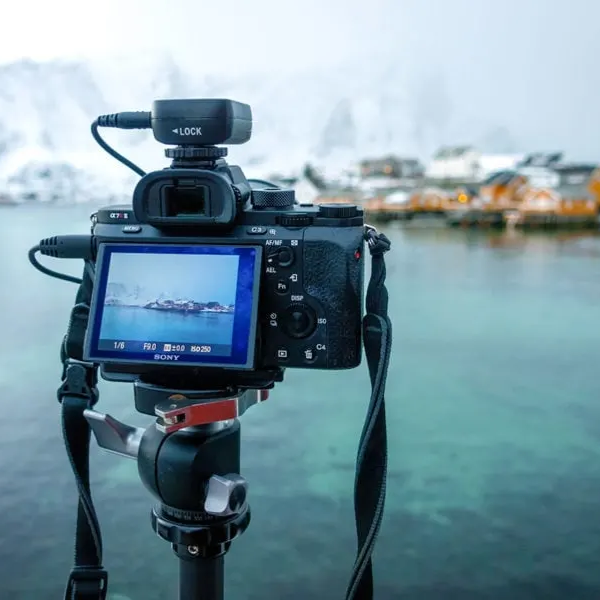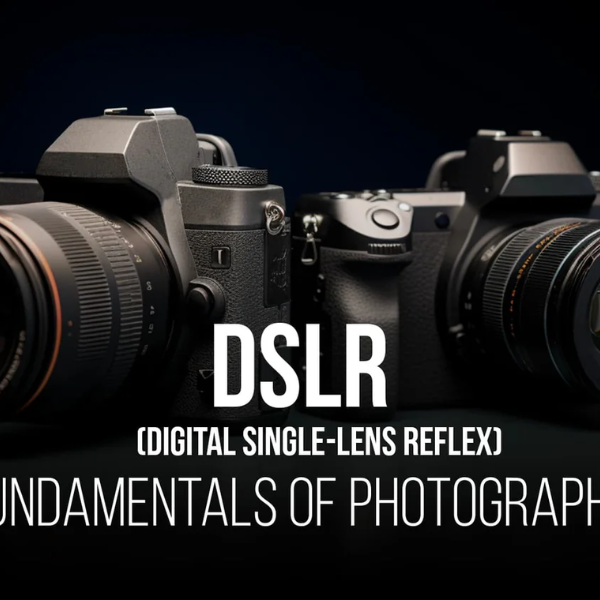Uncategorized
Shop DSLR Lenses for Every Photography Style
Shop DSLR Lenses for Every Photography Style
Choosing the right lens is essential for unlocking the full potential of your DSLR camera and taking your photography to the next level. Each lens is designed for specific shooting scenarios, making it easier to capture your creative vision. From capturing sweeping landscapes to isolating a single subject in perfect detail, there’s a DSLR lens for every style.
Here’s a guide to some of the best DSLR lenses for various photography styles:
1. Landscape Photography – Wide-Angle Lenses
For landscapes, wide-angle lenses provide expansive views and emphasize depth and perspective.

Why Wide-Angle Lenses Are Ideal for Landscapes
- Broad Field of View:
- Wide-angle lenses, typically ranging from 14mm to 35mm, can encompass vast scenes, making them ideal for capturing large landscapes or dramatic perspectives.
- Enhanced Depth:
- These lenses exaggerate the distance between foreground and background, adding a sense of depth and scale to your images.
- Foreground Emphasis:
- Wide-angles allow you to highlight foreground elements, such as rocks, flowers, or textures, while keeping the background in focus.
- Creative Perspectives:
- Their ability to distort perspective can create dynamic compositions, emphasizing converging lines or leading lines that draw viewers into the scene.
Types of Wide-Angle Lenses
- Standard Wide-Angle (24mm to 35mm):
- Offers a natural perspective without significant distortion.
- Great for landscapes with distinct foreground and background elements.
- Ultra-Wide-Angle (14mm to 24mm):
- Captures an extremely wide field of view.
- Ideal for dramatic landscapes but can introduce perspective distortion.
- Fisheye Lenses (8mm to 15mm):
- Provide a 180° field of view with pronounced distortion.
- Best used creatively rather than for traditional landscapes.
Top Features to Look for in a Wide-Angle Lens
- Aperture:
- While landscapes often use narrower apertures (e.g., f/8 to f/16) for greater depth of field, a wider maximum aperture (e.g., f/2.8) can be useful for astrophotography or low-light conditions.
- Sharpness:
- Edge-to-edge sharpness is crucial for wide-angle lenses to ensure details remain crisp across the entire frame.
- Distortion Control:
- Minimal distortion ensures straight horizons and natural proportions in your compositions.
- Weather-Sealing:
- Landscape photographers often encounter challenging environments; a weather-sealed lens ensures durability.
- Filter Compatibility:
- Many landscape photographers use filters (e.g., polarizers, ND filters). Choose lenses that support standard screw-on filters, or use adapters for ultra-wide lenses.
Techniques for Using Wide-Angle Lenses in Landscapes
- Include a Strong Foreground Element:
- Add interest to your shot by emphasizing rocks, flowers, or textures in the foreground.
- Use Leading Lines:
- Guide the viewer’s eye through the image with natural lines like paths, rivers, or fences.
- Watch for Distortion:
- Be mindful of stretching at the edges, especially with ultra-wide lenses. Keep horizons level to avoid unnatural tilting.
- Shoot at Small Apertures:
- Use f/8 to f/16 for greater depth of field, ensuring both foreground and background are sharp.
- Experiment with Perspectives:
- Get close to the ground or tilt the lens upward to create unique angles and compositions.
- Mind the Corners:
- Wide-angle lenses can darken or blur corners. Frame carefully to ensure all parts of the image add value.
Recommended Wide-Angle Lenses for Landscape Photography
- Canon RF 15-35mm f/2.8L IS USM:
- Excellent sharpness, weather-sealed, and versatile zoom range.
- Perfect for landscapes and low-light conditions.
- Nikon Z 14-30mm f/4 S:
- Ultra-wide, compact, and compatible with standard filters.
- Lightweight for travel photographers.
- Sony FE 16-35mm f/2.8 GM:
- Exceptional optical performance with minimal distortion.
- Ideal for professional-grade landscapes.
- Fujifilm XF 10-24mm f/4 R OIS:
- Compact, stabilized, and perfect for APS-C mirrorless cameras.
- Great for sweeping landscapes.
- Sigma 14-24mm f/2.8 DG DN Art:
- Available for multiple mounts, offering sharpness and minimal chromatic aberration.
- Excellent for landscapes and astrophotography.
- Tamron 17-28mm f/2.8 Di III RXD:
- Affordable yet sharp, with a lightweight design for mirrorless systems.
When to Avoid Wide-Angle Lenses
- Distant Details:
- If your primary subject is far away, such as a mountain peak, a telephoto lens (e.g., 70-200mm) may capture it more effectively.
- Crowded Compositions:
- Wide-angles can make cluttered scenes feel chaotic. Use them in open, spacious environments.
Conclusion
Wide-angle lenses are a powerful tool for landscape photographers, enabling dramatic compositions and immersive storytelling. By mastering their unique characteristics and pairing them with thoughtful composition, you can elevate your landscape images to new heights. Whether capturing the grandeur of mountain ranges or the tranquility of coastal vistas, a wide-angle lens ensures your vision is beautifully realized.
Recommended Lenses:
- Canon EF 16-35mm f/4L IS USM
- Ideal for sharp, wide shots with minimal distortion.
- Built-in image stabilization for handheld shooting.
- Nikon AF-S 14-24mm f/2.8G ED
- Ultra-wide focal length with exceptional clarity.
- Perfect for capturing dramatic skies and vast landscapes.
Key Features:
- Wide focal lengths (10mm–35mm).
- High resolution for detailed textures.
2. Portrait Photography – Prime Lenses
Prime lenses with large apertures create stunning bokeh, making them ideal for isolating subjects in portraits.

Portrait Photography – Prime Lenses
Prime lenses are a staple for portrait photography due to their superior image quality, wide apertures, and bokeh capabilities. With a fixed focal length, these lenses encourage thoughtful composition and often outperform zoom lenses in sharpness and light-gathering ability, making them the preferred choice for creating striking portraits.
Why Prime Lenses Are Ideal for Portraits
- Wide Apertures for Stunning Background Blur:
- Prime lenses typically offer wide maximum apertures (e.g., f/1.2 to f/2.8) that create a shallow depth of field. This isolates your subject from the background, resulting in a pleasing bokeh effect.
- Exceptional Sharpness:
- With fewer moving parts compared to zoom lenses, prime lenses often deliver sharper, more detailed images.
- Low-Light Performance:
- The large apertures allow more light to enter, enabling better performance in dim conditions and reducing reliance on flash.
- Creative Composition:
- Fixed focal lengths encourage photographers to move and experiment with different angles, leading to more dynamic and intentional compositions.
Popular Prime Lens Focal Lengths for Portraits
1. 50mm – The Versatile Option:
- Often referred to as the “nifty fifty,” this lens offers a natural perspective similar to the human eye.
- Ideal for full-body or environmental portraits.
- Example: Canon RF 50mm f/1.2L.
2. 85mm – The Classic Portrait Lens:
- Known for its flattering compression and ability to isolate subjects.
- Perfect for headshots and waist-up portraits.
- Example: Sony FE 85mm f/1.4 GM.
3. 35mm – Wider Perspectives:
- Great for environmental portraits where you want to include context or background elements.
- Watch for distortion, especially for close-up shots.
- Example: Sigma 35mm f/1.4 DG DN Art.
4. 135mm – For Tight, Intimate Shots:
- Creates beautiful compression and a dreamy bokeh effect.
- Excellent for headshots or outdoor portraits.
- Example: Nikon AF-S 135mm f/2 DC.
5. 24mm or Wider – Creative Angles:
- Suitable for group portraits or dramatic environmental shots.
- Be cautious of perspective distortion with close-up subjects.
- Example: Sony FE 24mm f/1.4 GM.
Features to Consider in a Prime Lens for Portraits
- Aperture Size:
- Look for lenses with f/1.2 to f/2.8 for beautiful background separation and light-gathering ability.
- Bokeh Quality:
- The design of the lens elements and aperture blades influences the smoothness of the out-of-focus areas.
- Sharpness and Contrast:
- Prime lenses excel in edge-to-edge sharpness, crucial for professional-grade portraits.
- Focusing Speed and Accuracy:
- Eye-AF capabilities in modern cameras demand fast and precise autofocus, especially with wide apertures.
- Build Quality:
- Weather sealing and robust construction are essential for outdoor and professional use.
Advantages of Using Prime Lenses in Portrait Photography
- Creative Control:
- Wide apertures allow precise control over depth of field, enabling artistic and professional-looking results.
- Portability:
- Primes are generally lighter and more compact than zoom lenses, making them easy to handle during extended shoots.
- Price-to-Performance Ratio:
- While premium primes can be expensive, many affordable options deliver outstanding quality (e.g., Canon RF 50mm f/1.8 STM).
Challenges of Using Prime Lenses
- Limited Flexibility:
- Fixed focal lengths require repositioning the camera to adjust framing, which may be less convenient compared to zoom lenses.
- Potential for Distortion:
- Wider primes (e.g., 24mm) can distort facial features when shooting close-ups. Use longer focal lengths for true-to-life portraits.
Tips for Portrait Photography with Prime Lenses
- Choose the Right Focal Length:
- Match the lens to the desired style of portrait. For headshots, use 85mm or longer; for environmental portraits, go wider with 35mm or 50mm.
- Mind Your Aperture:
- While wide-open apertures create beautiful bokeh, slightly stopping down (e.g., f/2.8 or f/4) can increase sharpness and depth of field for certain portraits.
- Focus on the Eyes:
- Ensure your subject’s eyes are sharp, as they are the focal point of most portraits.
- Use Natural Light:
- Pair wide-aperture primes with soft, natural light for flattering and evenly lit portraits.
- Experiment with Angles:
- Prime lenses encourage movement; try shooting from different perspectives to find the most flattering composition.
Recommended Prime Lenses for Portraits
- Canon RF 85mm f/1.2L USM:
- Outstanding sharpness, beautiful bokeh, and weather-sealed construction.
- Sony FE 50mm f/1.2 GM:
- Compact, lightweight, and offers incredible image quality with a creamy bokeh.
- Nikon Z 85mm f/1.8 S:
- Lightweight and affordable, with edge-to-edge sharpness.
- Sigma 105mm f/1.4 DG HSM Art:
- Known as the “bokeh master,” delivering dreamy out-of-focus backgrounds.
- Fujifilm XF 56mm f/1.2 R:
- A favorite among Fujifilm users for its compact size and beautiful rendering.
Conclusion
Prime lenses are an essential tool for portrait photographers, offering unmatched image quality and creative control. By choosing the right focal length and mastering composition, you can produce portraits that are not only visually stunning but also deeply expressive. Whether you’re a professional or a hobbyist, investing in a quality prime lens is a step toward elevating your portrait photography.
Recommended Lenses:
- Canon EF 85mm f/1.2L II USM
- Superb sharpness and dreamy background blur.
- Nikon AF-S 50mm f/1.8G
- Affordable and versatile, great for beginners and professionals.
Key Features:
- Wide apertures (f/1.2–f/2.8) for beautiful depth of field.
- Focal lengths ranging from 50mm to 135mm.
3. Wildlife Photography – Telephoto Lenses
Telephoto lenses allow you to capture distant subjects with incredible detail, essential for wildlife enthusiasts.
Recommended Lenses:
- Canon EF 100-400mm f/4.5-5.6L IS II USM
- Versatile zoom range for various wildlife situations.
- Nikon AF-S NIKKOR 200-500mm f/5.6E ED VR
- Impressive reach with built-in vibration reduction.
Key Features:
- Long focal lengths (200mm–600mm).
- Fast autofocus for tracking moving subjects.
4. Macro Photography – Macro Lenses
Macro lenses are perfect for capturing intricate details, such as flowers, insects, or textures.
Recommended Lenses:
- Canon EF 100mm f/2.8L Macro IS USM
- Hybrid IS technology for precise close-up shots.
- Nikon AF-S VR Micro-NIKKOR 105mm f/2.8G IF-ED
- Stunning sharpness and life-size reproduction.
Key Features:
- 1:1 magnification for true macro photography.
- Close minimum focusing distances.
5. Sports Photography – Fast Telephoto Lenses
Fast telephoto lenses are crucial for freezing action in fast-paced environments like sports events.
Recommended Lenses:
- Canon EF 70-200mm f/2.8L IS III USM
- Exceptional speed and image stabilization for dynamic shots.
- Nikon AF-S 70-200mm f/2.8E FL ED VR
- Pro-grade lens with fast focus and excellent sharpness.
Key Features:
- Wide apertures (f/2.8 or faster) for fast shutter speeds.
- Advanced stabilization for handheld shooting.
6. Street Photography – Versatile Zoom Lenses
Compact and lightweight zoom lenses are ideal for capturing spontaneous moments on the go.
Recommended Lenses:
- Canon EF 24-70mm f/2.8L II USM
- A versatile workhorse for everyday street scenes.
- Nikon AF-S 24-120mm f/4G ED VR
- Offers flexibility with a slightly longer reach.
Key Features:
- Focal lengths covering wide to short telephoto ranges.
- Lightweight and portable design.
7. Travel Photography – All-in-One Lenses
All-in-one zoom lenses provide convenience and versatility, perfect for travelers wanting to pack light.
Recommended Lenses:
- Tamron 18-400mm f/3.5-6.3 Di II VC HLD
- Wide-to-telephoto coverage in a single lens.
- Nikon AF-S DX NIKKOR 18-140mm f/3.5-5.6G ED VR
- Compact and versatile for everyday travel photography.
Key Features:
- Broad zoom range (18mm–400mm).
- Compact size with image stabilization.
8. Architecture Photography – Tilt-Shift Lenses
Tilt-shift lenses are specialized for correcting perspective distortion, ideal for architectural shots.
Recommended Lenses:
- Canon TS-E 24mm f/3.5L II Tilt-Shift
- Precise control over focus and perspective.
- Nikon PC-E 24mm f/3.5D ED Tilt-Shift
- Excellent for shooting buildings with straight vertical lines.
Key Features:
- Perspective control for distortion-free images.
- Sharp, high-resolution optics.
9. Video Recording – Silent and Stabilized Lenses
For hybrid shooters, lenses optimized for video are essential for smooth and quiet operation.
Recommended Lenses:
- Canon EF-S 18-135mm f/3.5-5.6 IS USM
- Nano USM technology for silent autofocus during video.
- Nikon AF-S DX NIKKOR 16-80mm f/2.8-4E ED VR
- Lightweight with vibration reduction for handheld video.
Key Features:
- Silent autofocus motors.
- Image stabilization to reduce camera shake.
Tips for Choosing the Right Lens
- Identify Your Style: Choose lenses tailored to the type of photography you enjoy most.
- Consider Compatibility: Ensure the lens mounts to your DSLR brand and model.
- Budget Wisely: Invest in high-quality lenses that provide lasting value.
- Think About Weight: For travel or street photography, lighter lenses are easier to carry.
- Future-Proof Your Gear: Opt for lenses that can grow with your skills and expand your creative options.
Conclusion
The right lens can transform your photography, opening up new creative possibilities and helping you capture the world as you see it. Whether you’re a beginner exploring your options or a seasoned professional looking for specialized tools, there’s a lens for every style and need. Start building your lens collection today and take your DSLR photography to new heights!


